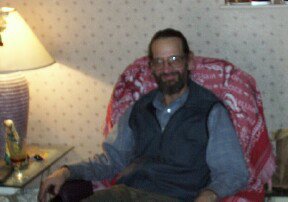While I was growing up, the Indianapolis 500 on TV was an annual event in our house. Names like Al Unser, Parnelli Jones, Jim Clarke, and Dan Gurney were part of my everyday language. I could read very well, and, by the time I was in the third grade, I had already graduated from Hardy Boys and Tom Corbett: Space Cadet, and was reading everything I could about the sport I loved and the heroes who drove those racing machines. Indianapolis and Formula 1 racing took most of my attention, although I also had an interest in drag racing, rally, sports car, and dirt track racing.
It was around the time I was ten that some of the sports programs on television began showing snippets and highlights of NASCAR races. And there were the NASCAR highlight newsreels at the Saturday Matinee at the local theater. The names of other racers--Lee and Richard Petty, Fireball Roberts, Joe Weatherly, Buck Baker, Tiny Lunde, Junior Johnson, Ned Jarrett, and Fred Lorenzen found their way to my list of heroes.
I became a diehard NASCAR fan long before I ever saw a race.
I finally got to see some local short track racing at a local track when I was 17, and, after that, continued to go to the track whenever I could afford it. I loved the sights, sounds, and smells of racing, where thirty or so cars seemed packed together so tightly on the little quarter mile track. Still, the sense of speed was there, and the fact that every car on the track looked like a wreck by the end of the race was evidence that every driver fought hard for his position.
In 1979, while on temporary duty at Dover AFB, as the Air Force was deciding whether I should go back to Germany or back to Colorado on a humanitarian reassignment, I got to see my first Big League NASCAR race. I don't remember who won (in my mind, it was Bobby Allison, but he was my favorite at the time, and, rather than look it up and correct my memory, I choose to keep it as it is) though I do remember that there were only five cars on the lead lap at the finish. I also remember the thrill of seeing all the big name drivers race in person, and the extraordinary sense of speed that I felt as the cars raced around the track. I will always remember that.
The reason for the short autobiography is that as I grow older, I become more nostalgic. I really do miss the old days, but I accept that NASCAR had to change. If it hadn't, most NASCAR fans would be waiting for snippets and highlights on the network sports programs, rather than being able to watch the races in their entirety on television. There also would have been a much longer list of drivers and spectators killed at races than there is now. So I accept NASCAR as it is today, and enjoy every race with the excitement of a first timer at the track.
Watching the NASCAR Toyota All Star Showdown last night brought back plenty of memories and increased the sense of nostalgia. Here was some real beating and banging, hard core, old school racing bringing me back to my late teens. To me, this is real racing. Watching the race, I realized that "old school" racing is far from gone.
Here was the kind of racing that hundreds of thousands of race fans enjoy every Friday and Saturday night at their local tracks, all across America. Every driver is out for him- or herself, scrapping and scrabbling hard for every position. The purse doesn't really matter, nor does the trophy, the sponsor, or the team. The object is to win, plain and simple.
In these troubled economic times, when large corporations--including the "big" teams of the Sprint Cup--are being forced to cut back spending, the Saturday night circle burners persevere. With the same local sponsors they have always had, they are always ready to race. In the same two car garages they have always had, they build, tune, and repair their cars for the next race. Their budget is usually anything they can afford, beg, borrow, or steal.
Fewer race fans can travel to the big tracks these days, due to uncertain economic future and the threat to job security. But they still go to the local short tracks, and now, the attendance at these tracks will increase as race fans stay closer to home. The local short tracks will prosper during the current recession.
Old school racing isn't gone, and it seems now that it is here to stay. Those who complain that racing isn't what it used to be need only travel a few miles to see the kind of racing they claim to miss so much.
I feel certain that, no matter what the economic conditions happen to be, Old School racing will survive.
Sunday, January 25, 2009
"Old School" Will Survive
Labels:
All Star Showdown,
Old School,
Opinion,
Race fans,
racing,
Racing History,
Rants,
Raves
Subscribe to:
Post Comments (Atom)














1 comment:
Rev Jim,
Your trip down Nostaglic Lane was very interesting! I concur that the local short track promoters, if they have their stuff together, can prosper with these trying times!
I grew up around the Cental Calif. racing in the 50's, 60's, and 70's. The likes of Billy Vukovich, Sr., Jr., and III, George Snider, Joe Leonard,and a local legend named Al Pombo.
I like your writings!! Come on over to my site and let me know what you think of my stuff!
www.captainblowdri.com
Thanks,
Leon Hammack
Post a Comment